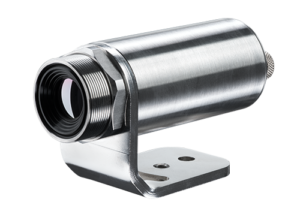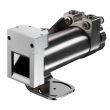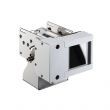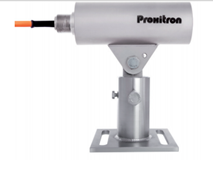Thermal imaging cameras can effectively detect any uncooled areas within the coke and identify potential hot spots. Continuous temperature monitoring of the coke on the conveyor ensures rapid response to hot spots thereby protecting the conveyor belt from damage and reduces fire risk from hot inclusions reigniting coke. |
Home Case Studies Temperature coke wharf
Temperature measurement of the coke for fire safety in the coke wharf
Pilger mill in tube rolling mills - hot and cold pipe detection
Increased confidence in safety with continuous monitoring and quick response alarm system
Reduction in insurance costs and prevention of damage and downtime
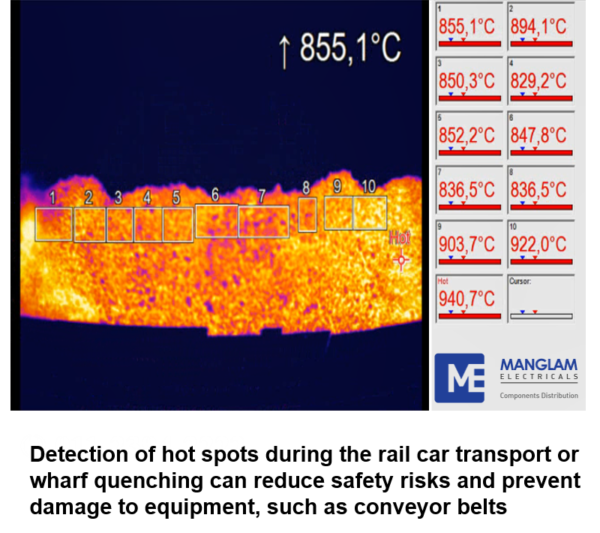
Challenges
During transport in conveyors, hot spots can be created which increases risk of fires and damages the conveyer belt.
Detection of these hot spots during the rail car transport or wharf quenching can reduce safety risks and prevent damage to equipment.
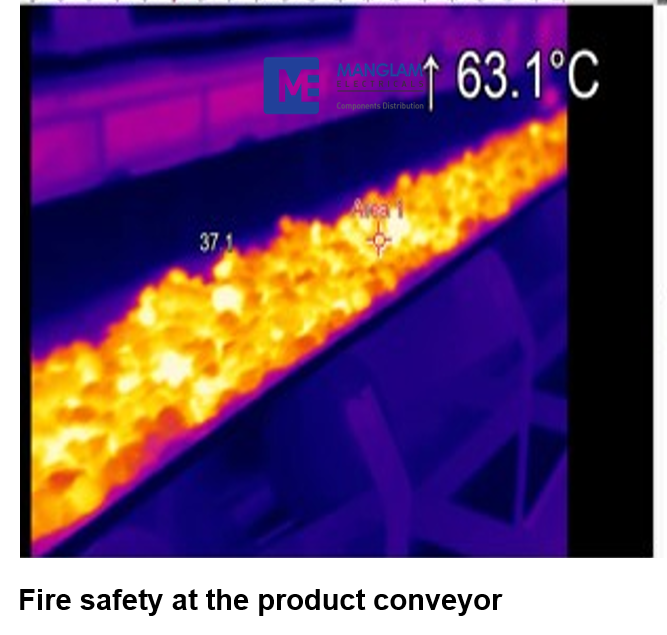
Solution
Thermal imaging cameras can effectively detect any uncooled areas within the coke and identify potential hot spots. For this application, a highly robust and compact IR camera was installed. This fast response camera has a 80 Hz frame rate and is especially suited to detect hot spots in the coke at an early stage.
Continuous temperature monitoring of the coke on the conveyor ensures rapid response to hot spots thereby protecting the conveyor belt from damage and reduces fire risk from hot inclusions reigniting coke.
Products and Accessories
Case Study Number
- TP3
Challenge
- The increasing flexibility of production lines requires a high adaptability of sensors. Continually changing object geometries, different temperatures and very high radiation or surrounding temperatures are no rarity.
- In a pilger mill those rough conditions can be found, among others in the production of seemless steel pipes. The raw steel blocks, each weighing a few tons are heated up first in a round oven at a temperature of 1300 °C.
- After descaling of the surface, the steel block is prepunched in a hole press with a strength from a converted 2000 t. In the next sloping rolling mill the growing pipe rotates between two rollers that are positioned at an angle to each other. The punching is widened to the size of the mandrel diameter.
Previous solution / Competitor product
- N/A
Solution
- The sensor that was installed at this application is the HMD OKA 2038.38 G with tube OL 19.
- The signal of the infrared sensors controls the movement of centering device and abutment. The point of view is restricted by the tube and prevents disturbances by steam in the cooling phase.
- An optimum adaptation to the operating conditions is given due to the adjustable response temperature. The HMD with self-learning response temperature (Auto-Teach function) is suited to continually changing conditions.
- The compact sensor with a stainless steel housing can withstand surrounding temperatures of up to 75° C. The use of a cooling jacket raises this up to 200° C.
- Alternatively sensors with fibre optic cables are available which permit an application at ambient temperatures up to 600° C without cooling.
Customer Benefits
- Maintenance-free
- High temperature stability
- Recognition of hot objects at big distances
- Self adjustment with Auto-Teach or step switch for the response temperature
Product Part number
- OKA 2038.38 G
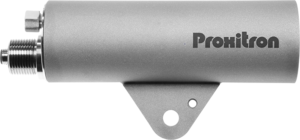
Brand
- Proxitron
Accessories
- Piros swivel stand HM2
- Tube OL 19
- Pilot light unit (for alignment) DAK 308 + OL 26
- Different cable lengths (e.g. 15 m)
Customer Testimonial
compared to previous solution or competition
Case Studies
Other Solutions in Hot Rolling Mills
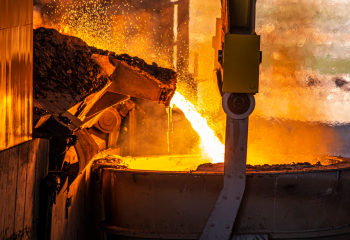
Sample case study title lorem ipsum here
Short description of the problem solved, maybe include the client name.
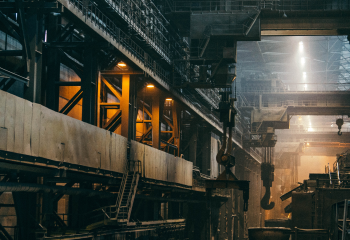
Sample case study title lorem ipsum here
Short description of the problem solved, maybe include the client name.
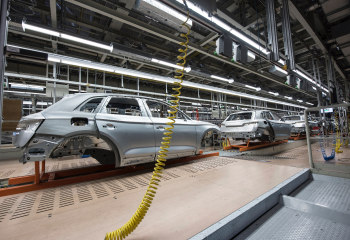
Sample case study title lorem ipsum here
Short description of the problem solved, maybe include the client name.

